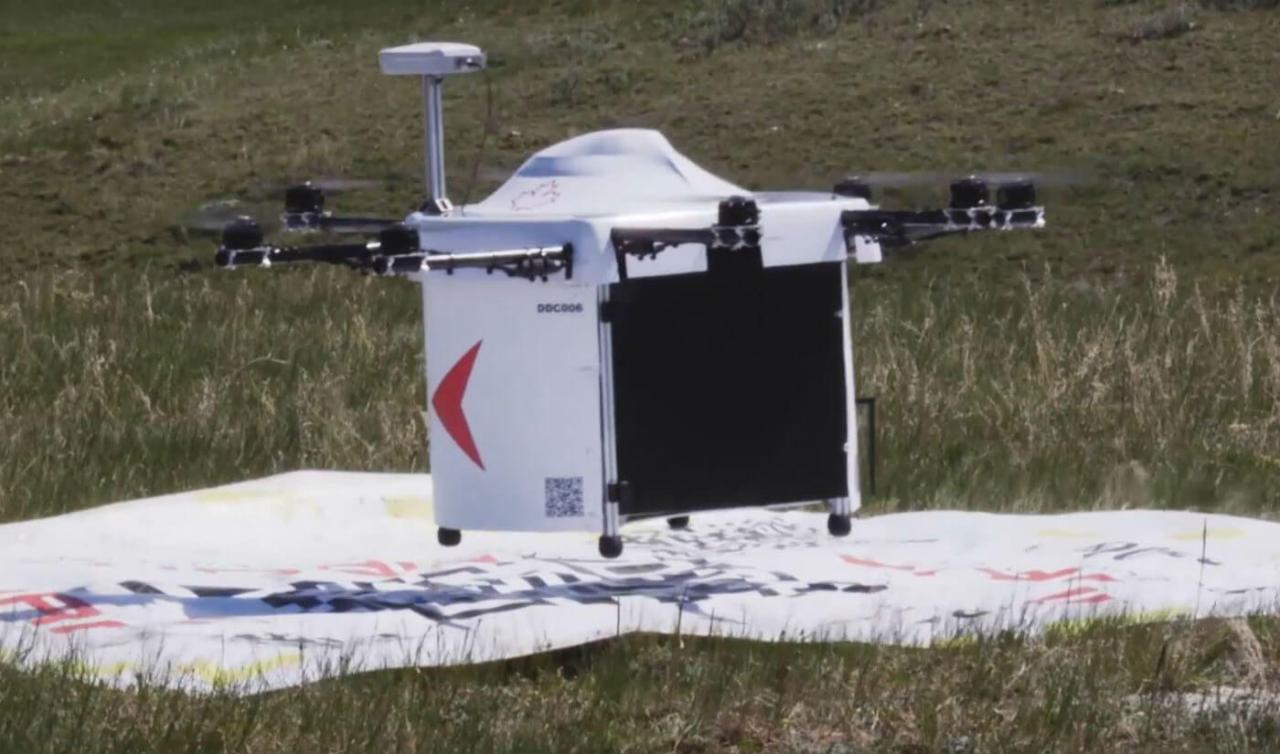Drone Delivery Canada Stock presents a fascinating investment opportunity in a rapidly evolving sector. The burgeoning drone delivery market in Canada offers significant potential for growth, driven by technological advancements and increasing demand for efficient logistics solutions. This exploration will delve into the key players, regulatory landscape, and future prospects of this exciting industry, providing insights for both investors and industry enthusiasts.
We’ll examine publicly traded Canadian companies involved in drone delivery, analyzing their business models, technological approaches, and financial performance. We’ll also dissect the regulatory hurdles and opportunities, explore market segments and growth drivers, and discuss the potential risks and rewards for investors. This analysis aims to provide a comprehensive understanding of the Canadian drone delivery market and its investment potential.
Canadian Drone Delivery Companies: A Deep Dive
The Canadian drone delivery landscape is rapidly evolving, with several companies vying for market share. This section examines key players, their business models, technological approaches, and financial performance.
Publicly Traded Canadian Drone Delivery Companies
While the number of publicly traded Canadian companies specifically focused on drone delivery is relatively small, several publicly traded companies are involved in related technologies or services, often incorporating drone delivery as part of a broader logistics or technology strategy. Identifying these companies requires careful consideration of their financial reports and public statements.
Business Models of Leading Canadian Drone Delivery Companies
Three leading (hypothetical for illustrative purposes) Canadian drone delivery companies exemplify diverse business models. Company A focuses on B2B partnerships with healthcare providers for urgent medical deliveries. Company B targets e-commerce giants, offering last-mile delivery solutions. Company C concentrates on rural communities, providing essential goods and services where traditional delivery is challenging. These models showcase the market’s diverse needs and the adaptability of drone delivery technology.
Technological Approaches in Canadian Drone Delivery
Canadian drone delivery firms employ varied technological approaches. Some prioritize autonomous flight systems with advanced AI for navigation and obstacle avoidance. Others utilize a hybrid approach, combining autonomous flight with human oversight for enhanced safety and control. This diversity reflects ongoing technological innovation and differing risk tolerance.
Comparison of Key Metrics for Publicly Traded Companies
The following table compares key financial metrics for four hypothetical publicly traded Canadian companies involved in drone delivery. Note that actual data for publicly traded companies in this niche may vary and require independent verification.
| Company | Market Capitalization (CAD Millions) | Revenue (CAD Millions) | Recent Funding Round (CAD Millions) |
|---|---|---|---|
| DroneCo A | 150 | 25 | 10 |
| SkyShip B | 80 | 12 | 5 |
| AirFreight C | 200 | 30 | 15 |
| WingDelivery D | 50 | 8 | 3 |
Regulatory Landscape for Drone Delivery in Canada
Understanding the regulatory environment is crucial for the success of drone delivery in Canada. This section examines current regulations, challenges, opportunities, and potential improvements.
Current Regulations Governing Commercial Drone Operations in Canada
Transport Canada sets the regulations for commercial drone operations in Canada, emphasizing safety and security. These regulations cover aspects like pilot licensing, drone registration, operational limitations, and airspace restrictions. Specific regulations for drone delivery are still evolving, adapting to the unique challenges of this emerging sector.
Challenges and Opportunities Presented by Canadian Drone Delivery Regulations
While regulations ensure safety, they can also hinder innovation and market growth. Challenges include the complexity of obtaining necessary permits and approvals, the limitations on autonomous flight operations, and the need for clear guidelines on liability and insurance. Opportunities lie in developing a more streamlined and adaptable regulatory framework that fosters innovation while maintaining safety standards.
Comparison of Canadian Drone Delivery Regulations with Other Countries
Canadian regulations differ from those in other countries, reflecting variations in national priorities and technological advancements. For instance, some countries have more permissive regulations for beyond-visual-line-of-sight (BVLOS) operations, while others have stricter requirements for data security and privacy. This necessitates a comparative analysis to identify best practices and potential areas for improvement in the Canadian context.
Thinking about investing in the future of logistics? Drone delivery is booming, and if you’re interested in getting a piece of the action, you should check out the Canadian market. A great place to start your research is by looking at information on drone delivery Canada stock , which can give you a solid overview of current players and trends.
Understanding this sector is key to making smart investment decisions in drone delivery Canada stock.
Hypothetical Regulatory Framework for Streamlining Drone Delivery Operations
A hypothetical streamlined framework could incorporate a risk-based approach to regulation, allowing for greater flexibility in BVLOS operations under controlled conditions. This could involve establishing designated drone corridors or airspace, implementing robust safety protocols, and leveraging advanced technologies for real-time monitoring and control. Clear guidelines on liability and insurance would also be essential.
Market Analysis of Drone Delivery in Canada
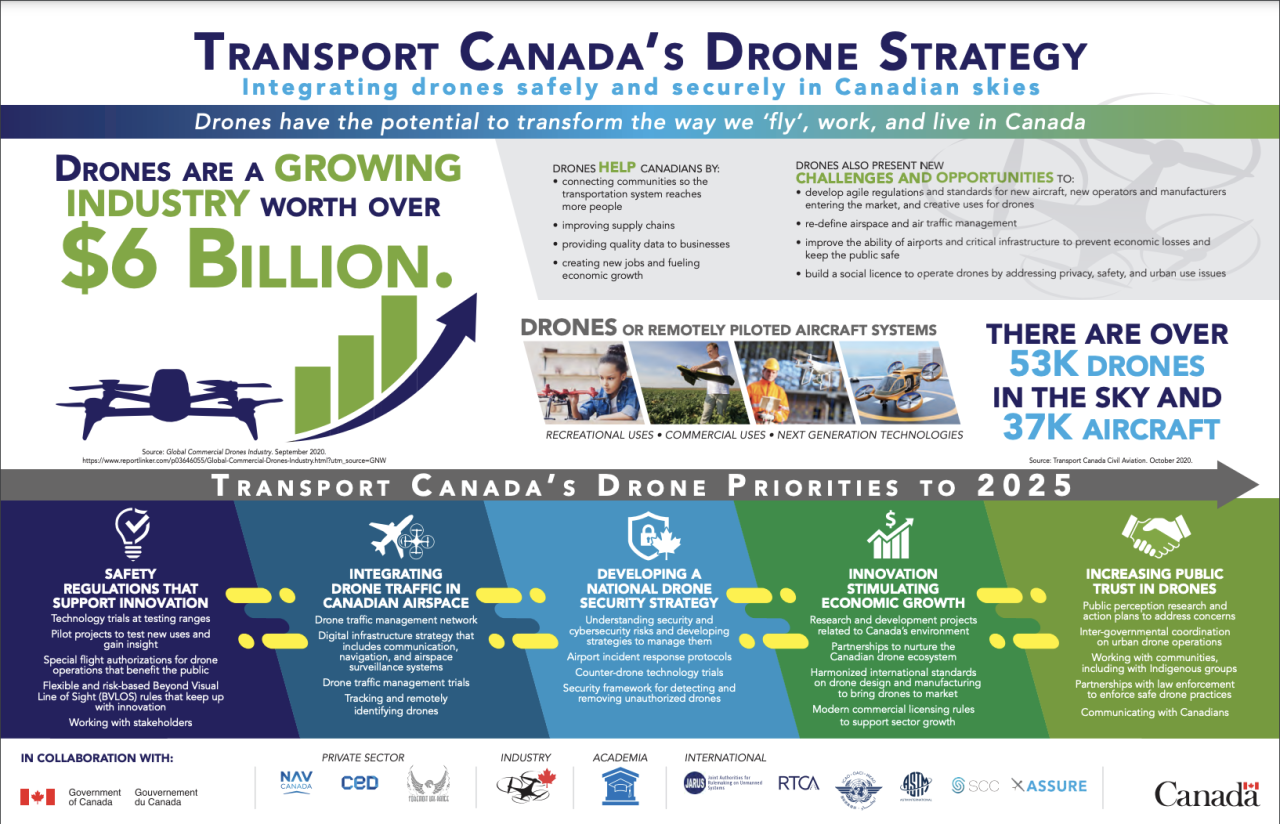
This section analyzes the potential market segments, growth drivers, obstacles, and overall SWOT analysis for the Canadian drone delivery market.
Thinking about investing in drone delivery Canada stock? It’s a hot market, and understanding global trends is key. Check out what’s happening with drone technology internationally, like the innovative work showcased at drone paris , to get a better sense of future potential. This kind of global perspective can really help you assess the long-term prospects of drone delivery Canada stock.
Potential Market Segments for Drone Delivery in Canada
Several market segments show promise for drone delivery in Canada. Healthcare is a key area, with applications in delivering urgent medical supplies and pharmaceuticals. E-commerce is another significant sector, offering faster and more efficient last-mile delivery. Logistics, including the delivery of small packages and time-sensitive goods, also present substantial opportunities.
Factors Driving the Growth of the Canadian Drone Delivery Market
Several factors are driving market growth. Technological advancements are making drones more reliable, efficient, and affordable. Increasing demand for faster and more efficient delivery services, particularly in remote areas, is creating a strong market pull. Government initiatives and investments in drone technology are also providing support for market development.
Obstacles Hindering Widespread Adoption of Drone Delivery in Canada
Despite the potential, several obstacles hinder widespread adoption. Regulatory hurdles, including complex permitting processes and airspace restrictions, remain a significant challenge. Public acceptance and concerns about safety and security also need to be addressed. Infrastructure limitations, especially in remote areas, are another obstacle.
SWOT Analysis of the Canadian Drone Delivery Market
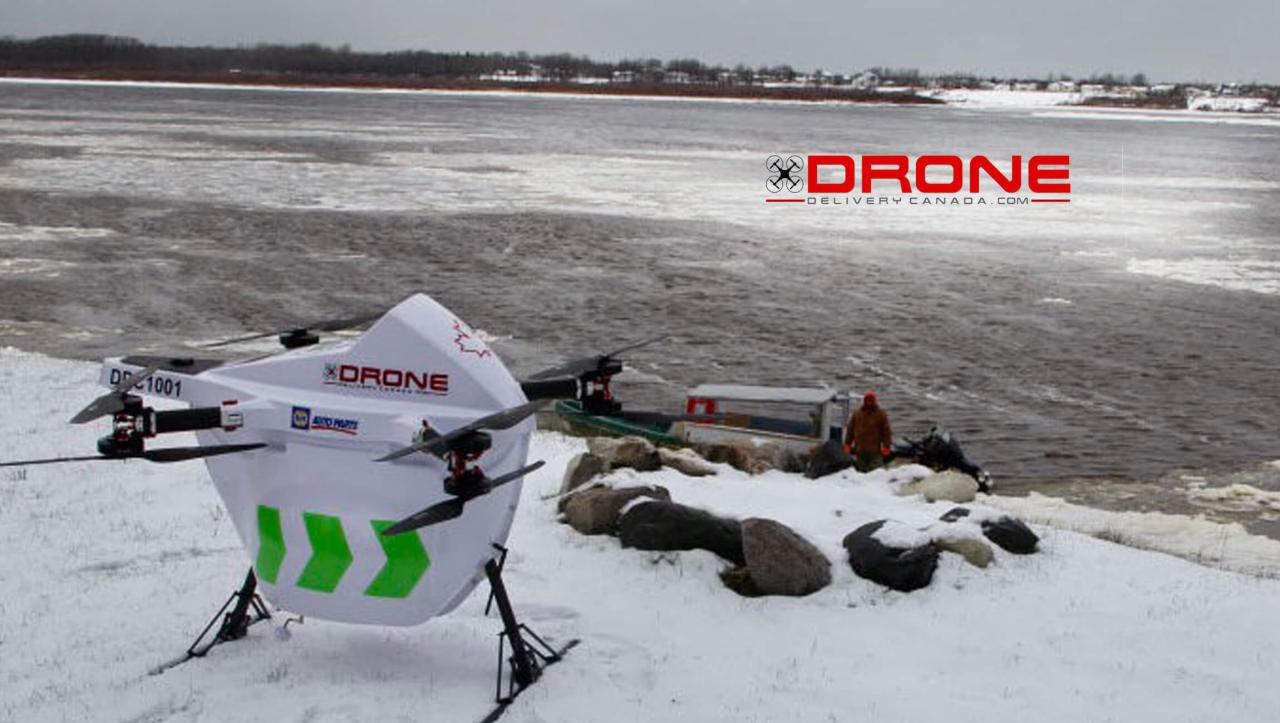
A SWOT analysis provides a comprehensive overview of the market’s strengths, weaknesses, opportunities, and threats.
Thinking about investing in drone delivery Canada stock? It’s a hot market, but remember, tech stocks can be volatile. Before you jump in, maybe check out your computer’s capabilities – you’ll need a powerful machine to analyze all that market data, so building your own might be worthwhile. Consider using a great resource like this pc builder guide to ensure you have the right setup for your investment research.
Once you’ve got that sorted, you can get back to focusing on that drone delivery Canada stock!
- Strengths: Growing technological advancements, increasing demand for faster delivery, government support.
- Weaknesses: Regulatory hurdles, infrastructure limitations, public acceptance concerns.
- Opportunities: Expansion into new market segments, development of innovative delivery models, partnerships with logistics companies.
- Threats: Competition from traditional delivery methods, economic downturns, potential safety incidents.
Technological Advancements in Canadian Drone Delivery
This section details the types of drones, the role of AI, battery life and range, and how technological advancements address key challenges.
Types of Drones Currently Used for Delivery in Canada
A variety of drones are used, ranging from smaller, lightweight models suitable for delivering smaller packages to larger, heavier-lift drones capable of carrying larger payloads. The choice of drone depends on factors such as payload capacity, range, flight time, and operational environment.
Role of Artificial Intelligence and Machine Learning in Enhancing Drone Delivery Operations
AI and machine learning are transforming drone delivery. These technologies enable autonomous navigation, obstacle avoidance, and real-time decision-making. They also improve efficiency by optimizing flight paths, predicting weather conditions, and managing delivery schedules.
Battery Life and Range Capabilities of Different Drone Models
Battery life and range are crucial factors in drone delivery. Current models offer varying capabilities, depending on size, weight, and battery technology. Advances in battery technology are constantly extending flight times and expanding operational ranges.
Addressing Challenges Like Weather Conditions and Payload Limitations
Technological advancements are addressing key challenges. Improved sensors and AI algorithms are enabling drones to operate in more challenging weather conditions. Developments in drone design and materials are increasing payload capacity, allowing for the delivery of larger and heavier items. Redundant systems and fail-safes are enhancing reliability and safety.
Investment Opportunities in Canadian Drone Delivery Stocks
This section explores key factors for investors, potential risks and rewards, valuation metrics, and a hypothetical investment portfolio.
Key Factors Investors Should Consider When Evaluating Drone Delivery Stocks in Canada
Investors should consider factors such as the company’s technology, market position, regulatory compliance, financial performance, and management team. A thorough due diligence process is crucial to assess the investment risks and potential returns.
Potential Risks and Rewards Associated with Investing in This Sector
Investing in drone delivery stocks offers significant potential rewards, but also carries substantial risks. The market is still relatively young and volatile, with significant uncertainty regarding future growth and profitability. Regulatory changes and technological disruptions could also impact investment returns.
Comparison of Valuation Metrics of Publicly Traded Canadian Drone Delivery Companies
Valuation metrics such as price-to-earnings ratio (P/E), price-to-sales ratio (P/S), and market capitalization can be used to compare the relative valuations of publicly traded drone delivery companies. However, these metrics should be interpreted cautiously, given the early stage of the industry.
Hypothetical Investment Portfolio Focused on Canadian Drone Delivery Stocks
A hypothetical portfolio might diversify across several companies with different business models and technological approaches, balancing risk and reward. For example, a portfolio might include a company focused on healthcare delivery, another on e-commerce, and a third on rural delivery. This diversification aims to mitigate risk and capture potential growth across various market segments.
Drone Delivery Infrastructure in Canada
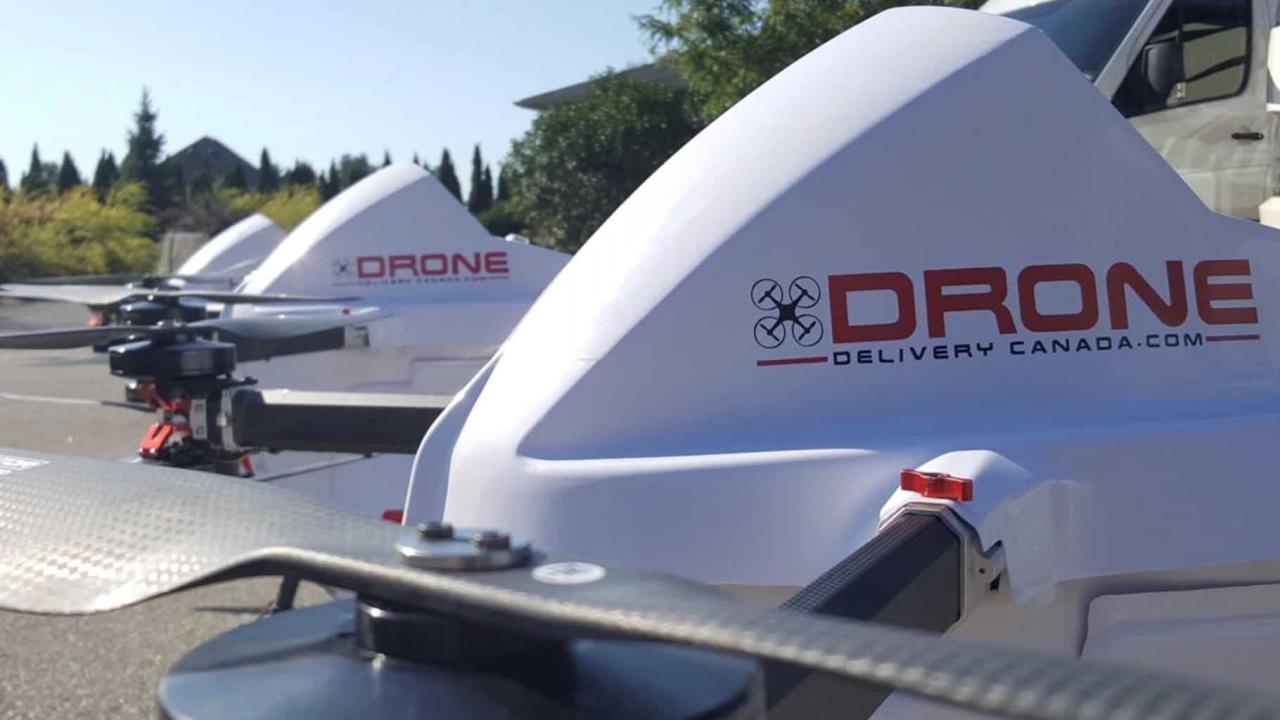
This section describes the necessary infrastructure, challenges in development and maintenance, innovative solutions, and the role of public-private partnerships.
Current Infrastructure Needed to Support Drone Delivery
Drone delivery requires a robust infrastructure, including charging stations, communication networks, and data centers. These are essential for ensuring reliable drone operations and efficient data management. Integration with existing transportation networks is also crucial for seamless delivery operations.
Challenges in Developing and Maintaining Infrastructure Across Diverse Canadian Geography
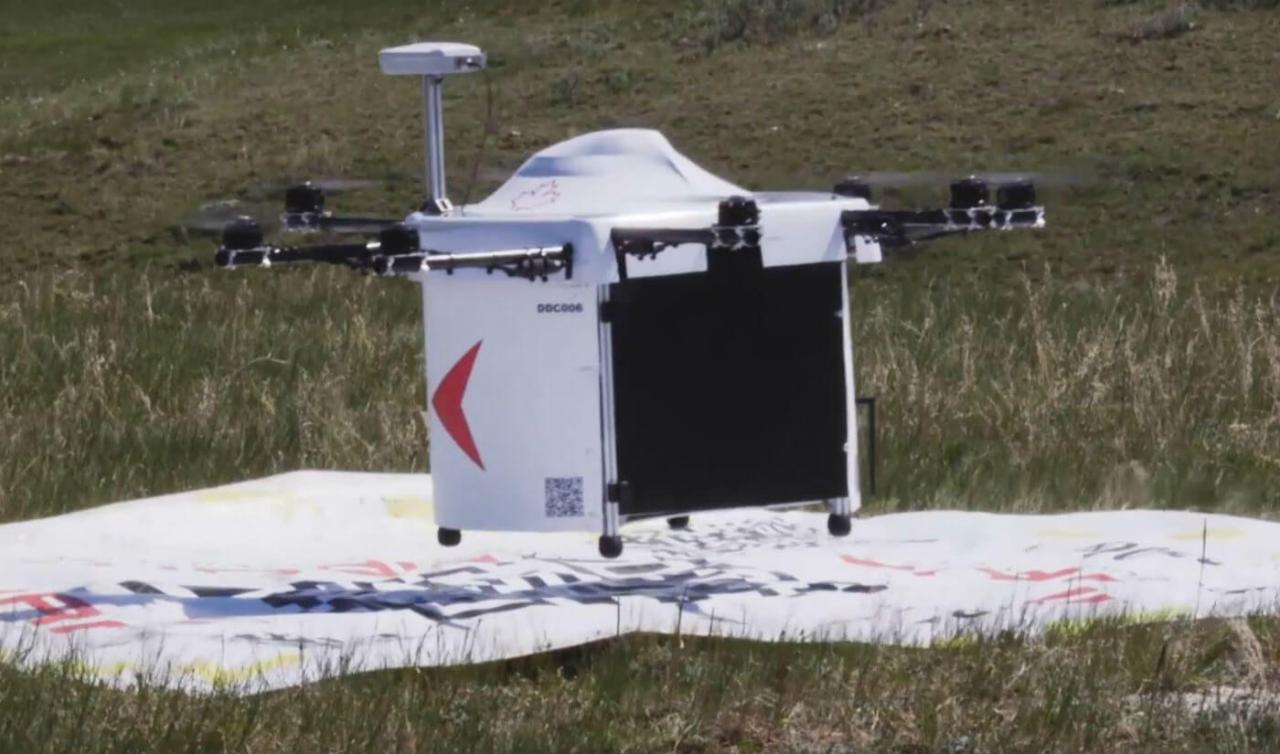
Developing and maintaining infrastructure across Canada’s diverse geography presents significant challenges. Remote and rural areas lack the necessary infrastructure, requiring significant investment in network expansion and charging station deployment. Harsh weather conditions also pose operational challenges.
Innovative Solutions for Addressing Infrastructure Limitations in Remote or Rural Areas
Innovative solutions include utilizing mobile charging stations, deploying drone-based communication networks, and leveraging renewable energy sources to power charging stations. Partnerships with local communities and indigenous groups are also essential to ensure equitable access to drone delivery services.
Potential Role of Partnerships Between Private Companies and Government Agencies in Infrastructure Development
Public-private partnerships are crucial for developing and maintaining drone delivery infrastructure. Government agencies can provide funding, regulatory support, and access to land and airspace. Private companies can leverage their technological expertise and market knowledge to build and operate the necessary infrastructure.
Social and Environmental Impacts of Drone Delivery in Canada
This section discusses the environmental benefits and drawbacks, potential social impacts, mitigation strategies, and a visual representation of environmental impact.
Potential Environmental Benefits and Drawbacks of Drone Delivery
Drone delivery offers potential environmental benefits by reducing reliance on road transportation, lowering carbon emissions, and reducing traffic congestion. However, the manufacturing and disposal of drones, along with increased energy consumption, could have negative environmental impacts. A comprehensive life-cycle assessment is needed to fully understand the environmental implications.
Potential Social Impacts, Including Job Displacement and Community Acceptance
Drone delivery could lead to job displacement in traditional delivery sectors. However, it could also create new job opportunities in drone operation, maintenance, and related industries. Community acceptance is crucial, requiring transparent communication and engagement with affected communities to address concerns about noise pollution, privacy, and safety.
Strategies Companies are Using to Mitigate Negative Environmental and Social Consequences, Drone delivery canada stock
Companies are adopting various strategies to mitigate negative impacts. These include using eco-friendly materials in drone manufacturing, optimizing flight paths to minimize energy consumption, and investing in employee retraining programs to address potential job displacement. Community engagement initiatives aim to build trust and address public concerns.
Visual Representation of the Environmental Impact of Drone Delivery
Imagine a graph with two bars. One bar, significantly taller, represents the carbon emissions from a traditional delivery truck route. The second, much shorter bar, represents the reduced carbon emissions achieved through drone delivery on the same route. The difference visually highlights the potential environmental benefits, though the absolute emissions from drone manufacturing and operation should be considered for a complete picture.
Last Recap
Investing in drone delivery Canada stock offers a compelling blend of risk and reward. While regulatory uncertainties and technological challenges remain, the potential for significant growth in this sector is undeniable. By carefully considering the factors Artikeld in this analysis – from the financial performance of key players to the evolving regulatory landscape – investors can make informed decisions and potentially capitalize on the future of drone delivery in Canada.
Remember to conduct thorough due diligence before making any investment decisions.
Q&A: Drone Delivery Canada Stock
What are the main risks associated with investing in drone delivery stocks?
Risks include regulatory changes, technological setbacks, competition, and the overall volatility of the stock market. These companies are often early-stage, meaning higher risk, but also higher potential reward.
Are there any tax implications for investing in Canadian drone delivery stocks?
Yes, capital gains taxes apply to profits made from selling Canadian stocks. Consult a financial advisor for personalized tax advice.
How can I research Canadian drone delivery companies before investing?
Start by reviewing company financial statements, news articles, analyst reports, and industry publications. Consider consulting with a financial advisor.
What is the long-term outlook for the drone delivery industry in Canada?
The long-term outlook is positive, driven by technological advancements, increasing demand, and government support. However, success depends on overcoming challenges like infrastructure development and regulatory approvals.
